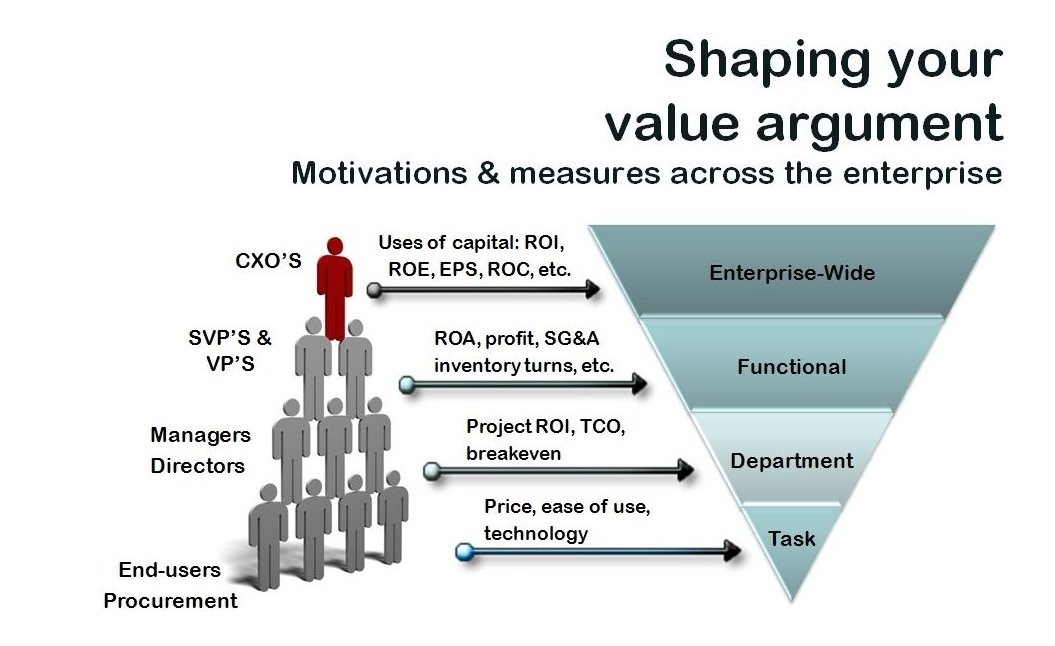— November 5, 2018
How to Adjust Your Sales Strategy for More Complex Terrain
In our recent executive brief, “Six Ways to Shorten the Sales Cycle,” one of the prime takeaways is the importance of tailoring your technology sales and negotiation process to the increasingly complex customer decision landscape. In great part, this is due to the expanding involvement of multiple people (and functions) in the decision process.
IDC underscored an important sub-trend to this reality in their Spring 2018 update to the Worldwide Semiannual IT Spending Guide: Line of Business: “Businesses are forecast to spend $ 1.67 trillion on technology (hardware, software, and services) in 2018. Roughly half of that spending (50.5%) will come from the IT budget while the other half (49.5%) will come from the budgets of technology buyers outside of IT. The former includes IT-funded purchases as well as joint projects funded by IT. The latter includes business-funded purchases as well as joint projects funded by line-of-business (LOB) buyers and “shadow IT” projects funded by the LOB without IT involvement. LOB technology spending has been growing at a faster rate than IT spending for a number of years. The compound annual growth rate (CAGR) for LOB spending over the 2016-2021 forecast period is predicted to be 6.9% compared to the 3.3% CAGR for IT spending.”
This represents a major disruption of how you sell as the ascendance of SaaS/Cloud systems and associated services shifts budgets from capital expenses (CAPEX) to operational expenditures (OPEX). Lower up-front capital investments from large central IT budgets and more vetting authority and veto power originating from outside the IT department feed this necessary shift in sales focus.
Shaping Multiple Value Arguments for LOB Stakeholders and Managing Your Agenda Accordingly
Relentless and thorough preparation is where negotiators on the vendor side shortchange themselves. It’s a major point of focus during our negotiation training, and one of the most critical aspects of this is discovering the requirements and business goals of the LOB leaders who need to understand and buy your value argument. Crafting your value argument – the ultimate answer to the question, “What’s in it for us?” – can fall flat and jeopardize the deal if your argument is presented with only one kind of stakeholder in mind.
Early inquiry with your primary point of contact or sponsor about the roles and constituencies who will have co-authority or primary authority over the decision to buy is critical. If your sponsor is not the decision maker, you need a more actionable “lay of the land” plan. Once you assess the decision-making process, you can start touching line-of-business contacts and get a better picture of organizational needs, departmental goals and individual motivations.

Source: Shaping Your Value Argument
While the above graphic is generally true for many organizations, you need to understand the specific motivations and metrics that drive your customers’ decisions. Note that IT, where many sales calls are made, has significantly different motivations from the rest of the business. If a seller only focuses on IT’s or procurement’s motivations, their ability to drive faster closing and higher prices will be severely compromised.
The thought process for you as a negotiator is similar to that for your internal negotiations: Identify goals by individual, using the LOB leaders’ measurement systems as appropriate. Remember that the deeper you go in a customer organization, the more your argument will resonate at each key point in what is an increasingly distributed and collaborative buying process. Win over more LOB sponsors and you get greater leverage in closing agreements.
The centers of buying power for big technology purchases are shifting beneath our feet. To be successful, you have to be ready to make a valuable argument to each responsible party in turn. Leaving one out will only lead to stalling your agreement when that party is one of the decision makers – and lessen the likelihood of closing the deal you want.
Agenda Management
Over the past year we have seen over 50 deals stall because of mismanagement of time and resources!
The “time factor” — how you manage it against other considerations and use the high-level (or macro) agenda to help create agreement has a huge impact on your success.
If you have excellent value creation and qualifications that solve problems for the LOB as they emerge, you may be able to accelerate the process, but that involves thoughtful agenda management. This is why gaining and confirming agreement on timing is important. If you believe you can accelerate the process to closing, you must engage the right resources in a timely fashion on both sides to make decisions.
Understanding and managing your touchpoints with LOB stakeholders—and being able to roll up budgets and requirements from disparate decision makers— is a much more nuanced game than just winning over the CTO or CIO and his/her VPs and directors. But it will be a necessary evolution as LOB leaders command more authority in your customers’ technology purchase decisions.
Business & Finance Articles on Business 2 Community
(52)